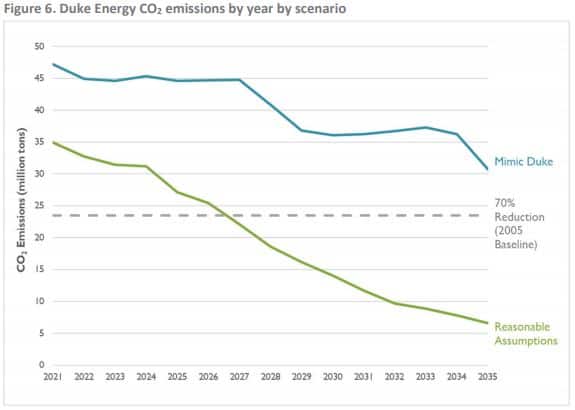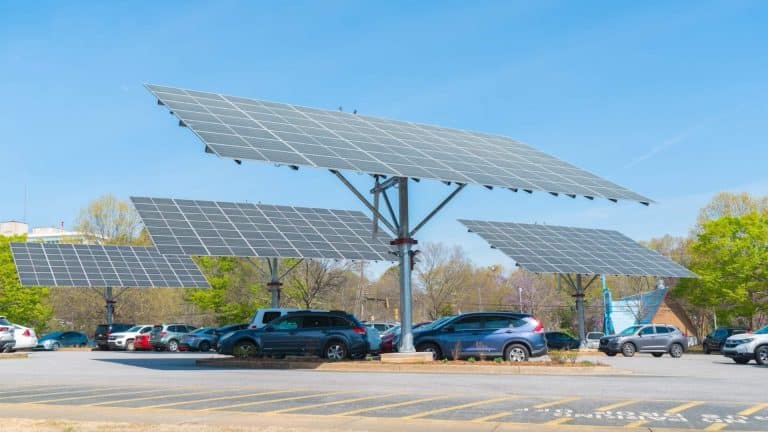Several months ago, North Carolinians were startled when state lawmakers unexpectedly introduced electric reform legislation in the form of House Bill 951. Many noted the bill appeared to be written by special interest groups behind closed doors. A revised version of the bill was recently released and is currently set to be passed by the Senate and House as quickly as next week. This version of the bill, negotiated between legislators and North Carolina’s Governor Roy Cooper, is an improvement on the previous version, which would have locked North Carolinians into continued reliance on fossil fuels regardless of the economic burdens, but the revised bill still has problematic policy proposals.
It’s true that electricity regulations in North Carolina and across the Southeast need to realign utility incentives with decarbonization and affordable customer bills, instead of continued incentivization of more and more investments in traditional, centralized power infrastructure. Governor Cooper started a process to do just that when he issued Executive Order 80, calling for a transition to a clean energy economy, and led a years-long stakeholder process to develop a Clean Energy Plan for the state. The development of HB 951 is a stark contrast to the open process led by the Cooper administration to develop EO 80. The results show a favorability toward the utilities and other special interests, despite the intentions of the bill to improve the regulation of electric utilities and meet the Governor’s carbon reduction goals.
Now that the revised bill has been released to the public, let’s look at what improvements lawmakers may have missed.
Carbon Plan Lacks Enforceability
The centerpiece of the bill, the Carbon Plan, to be formulated by the North Carolina Utilities Commission (NCUC) to, “take all reasonable steps to achieve a 70% reduction in emissions of CO2 emitted in the State from [power plants] owned or operated by electric public utilities from 2005 levels by the year 2030,” is a necessary step to codify the important work done by the Cooper administration over the last few years. NCUC is the state regulator of electric utilities.
However, the bill language does not appropriately acknowledge this importance by including the language needed to make the plan enforceable. The bill should be clear that the ultimate actions taken to reduce emissions are the responsibility of electric utilities, while the Commission develops the plan and, most importantly, provides oversight.
Instead, this version of the bill favors utilities by giving them seemingly equal footing with the NCUC when making a determination on when a change to the Carbon Plan is needed. This includes potentially delaying achievement of the carbon reduction goal if a utility invests in a technology that takes longer to develop, such as new nuclear. For more on Duke Energy’s current carbon reduction trajectory, see previous blogs on its Integrated Resource Plan and our decarbonization report.

Ratemaking Changes Reward Bare Minimum
The other main part of the bill allowing multiyear ratemaking and performance-based regulation (PBR) still needs work. Many advocacy organizations have already pointed out the potential for the language to allow unchecked profits, skyrocketing bills, and further harm to low-income customers. Here we dive into just two of the many issues in the ratemaking regulatory proposal in the current version of HB 951. These two issues are:
- Use of the minimum system method that disproportionately burdens residential (and thus low-income) customers with fixed fees, and
- Limitations on environmental performance incentive mechanisms that only reward utilities for doing what is already required by law.
Use of Minimum System Method
The bill language that utilities should use the minimum system method when allocating costs among its customer classes would lock in the shifting of costs from large industrial users to residential customers. In Duke’s last rate case, SACE and co-intervenors represented by the Southern Environmental Law Center submitted testimony that shows how Duke’s use of the minimum system method in this way results in over-allocating costs to residential customers and thus charging them more. For more info, read our blog post and the testimony itself from industry expert Jonathan Wallach.
This is just one example of what happens when legislation is developed behind closed doors with the utility and large customers at the table: utilities get what they want at the expense of those who do not have a voice at the table – namely low-income customers who are already paying a disproportionately high portion of their incomes for a disproportionately high portion of the utility’s costs.
Limitations on environmental performance incentive mechanisms
The same section of the legislation puts a limitation on any performance incentive mechanism (PIM) related to environmental outcomes that do not appear on any other type of PIM. Under a PBR, a utility earns returns based on metrics or PIMs rather than on how much it is spending. HB 951 states that an environmental PIM cannot go beyond state or federal laws or regulations.
Since the utility is required to meet such state and federal environmental laws and regulations, any environmental PIM would essentially incentivize the utility for doing what is already required of it, and cannot be incentivized to go beyond that law or regulation. Therefore the utility gets an incentive for doing what it already must do as required by the law?
This language in HB 951 unnecessarily limits what the Commission can do with these key kinds of PIMs, and could lead to utility profit windfalls for the utility doing the bare minimum. Instead the NCUC should be able to incentivize the utility to go above existing environmental regulations. We have seen performance-based regulation be successful in many other states, but not with this kind of handcuffs put on the Commission from the beginning.
What Else Is In The Bill?
The legislative text in HB 951 also includes the ability for utilities to securitize some of the remaining debt they owe on some of the coal units still operating in the state. Securitizing this debt could make it easier for utilities to retire these coal units earlier without burdening customers with additional costs based on past decisions the utility made to continue to invest in these power plants. Coal retirement securitization could and should go farther than what is proposed in the bill.
The proposed bill also requires the Commission to weigh in on a number of additional issues, which may or may not lead to updates to current regulations. These issues include:
- Standby service charges,
- Net metering rates,
- Establishing an on-bill repayment program for energy efficiency improvements, and
- Voluntary renewable energy or renewable energy credit purchase program for different classes of customers.
Finally, the bill allows small solar projects that signed contracts developed under the Public Utility Regulatory Policies Act (PURPA) before November 2016 to sign a new contract for a lower rate but a longer-term, extending the contract ten years past its current term.
Good Intentions, Problematic Process
HB 951 could bring about both positive and not-so-positive enduring changes in the electric sector in North Carolina. Even though not everything in this bill is aligned with SACE’s priorities and good policymaking practices, it is also true that current practices need work. In North Carolina, as in most of the Southeast, the utility’s business incentives are aligned with spending more ratepayer dollars on traditional energy projects like large, centralized power plants.
The intentions behind the bill are clear:
- Setting in place a carbon reduction plan,
- Moving toward performance-based rate regulation, and
- Reducing the financial burden to customers for past poor decisions made by utilities to keep risky coal plants running.
This is the direction the electricity sector in North Carolina, and across the region, needs to be headed. However, allowing legislation of this magnitude to be negotiated behind closed doors by special interests waters down those intentions by making them less enforceable, locking in methods that overly burden low-income residential customers, and giving utilities profit windfalls for doing the bare minimum.
SACE will continue to work with policymakers, stakeholders, regulators, and utilities to advocate for responsible and equitable energy choices to ensure clean, safe, and healthy communities in North Carolina and across the Southeast.
#NCCarbonPlan



